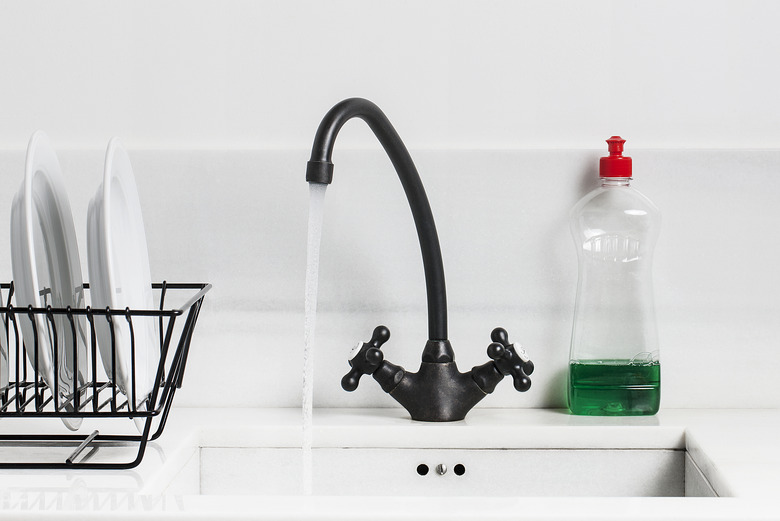Plumber's Putty For Leaks
Plumber's putty should only be used to prevent or stop leaks coming from specific areas on a sink. It is not to be used interchangeably with products such as silicone caulk or Teflon tape. Before you attempt to repair a leaky sink, determine whether plumber's putty is the right material for the job.
Where to Use Plumber's Putty
Where to Use Plumber's Putty
Plumber's putty is designed for very specific plumbing jobs. Plumber's putty is most commonly used to seal drains, faucets and other fixtures, which is why it's sometimes called "sink drain putty." If you find that this is where the leaks are originating, you can use putty to reseal these fixtures. Putty is typically used during the installation of these fixtures, but may deteriorate over time, which can cause leaks. Additionally, if harsh solvents come in contact with the putty, they may speed up the deterioration.
Where Not to Use Plumber's Putty
Where Not to Use Plumber's Putty
Putty should never be used on any component of the plumbing where water pressure is a factor — especially pipes. Putty should never be used on the threads of pipes or to seal PVC pipes without threads. Putty should also never be used to seal the space between the sink and wall, or the cabinet it sits in, depending on your sink setup. Each of these applications requires a specific type of adhesive.
Teflon Tape vs. Plumber's Putty
Teflon Tape vs. Plumber's Putty
A very common plumbing mistake is to use Teflon tape and plumber's putty interchangeably. If the leaks are coming from a pipe joint, plumber's putty is the wrong tool for the job. Plumber's putty will not create an adequate seal on the pipe threads, and will ultimately cause a bigger mess. Use Teflon tape to reseal pipe threads and stop leaks from happening. In most cases, new Teflon tape may be applied over old Teflon tape to stop a leak.
By wrapping the Teflon tape around the pipe threads, a thin put protective layer forms to keep water from seeping out of the connection. Crucially, using plumbing tape for leaks also means the sealant does not come into contact with the inside of the pipe. On the other hand, plumber's putty cannot adequately provide such a thin layer and will inevitably be squeezed into the pipe itself. For potable water pipes, this is bad news — now your drinking water is contaminated with plumber's putty.
How to Use Plumber's Putty Correctly
How to Use Plumber's Putty Correctly
Many fittings and drains come with rubber or plastic gaskets used to prevent leaks, but these can be replaced with plumber's putty. When you first work with putty, it may seem very hard to work with, but this is normal. Body heat is enough to make the putty more malleable — just rub the putty between your hands until it forms into a thin, snake-like shape.
Connect the ends of the putty and shape it to fit the bottom of the drain or fitting you are installing — such as around the bottom edge of a new faucet. Press the fitting over the putty, then wipe up the excess with a damp cloth. Don't use plumber's putty in plastic sinks or on granite countertops because it can stain these materials.
